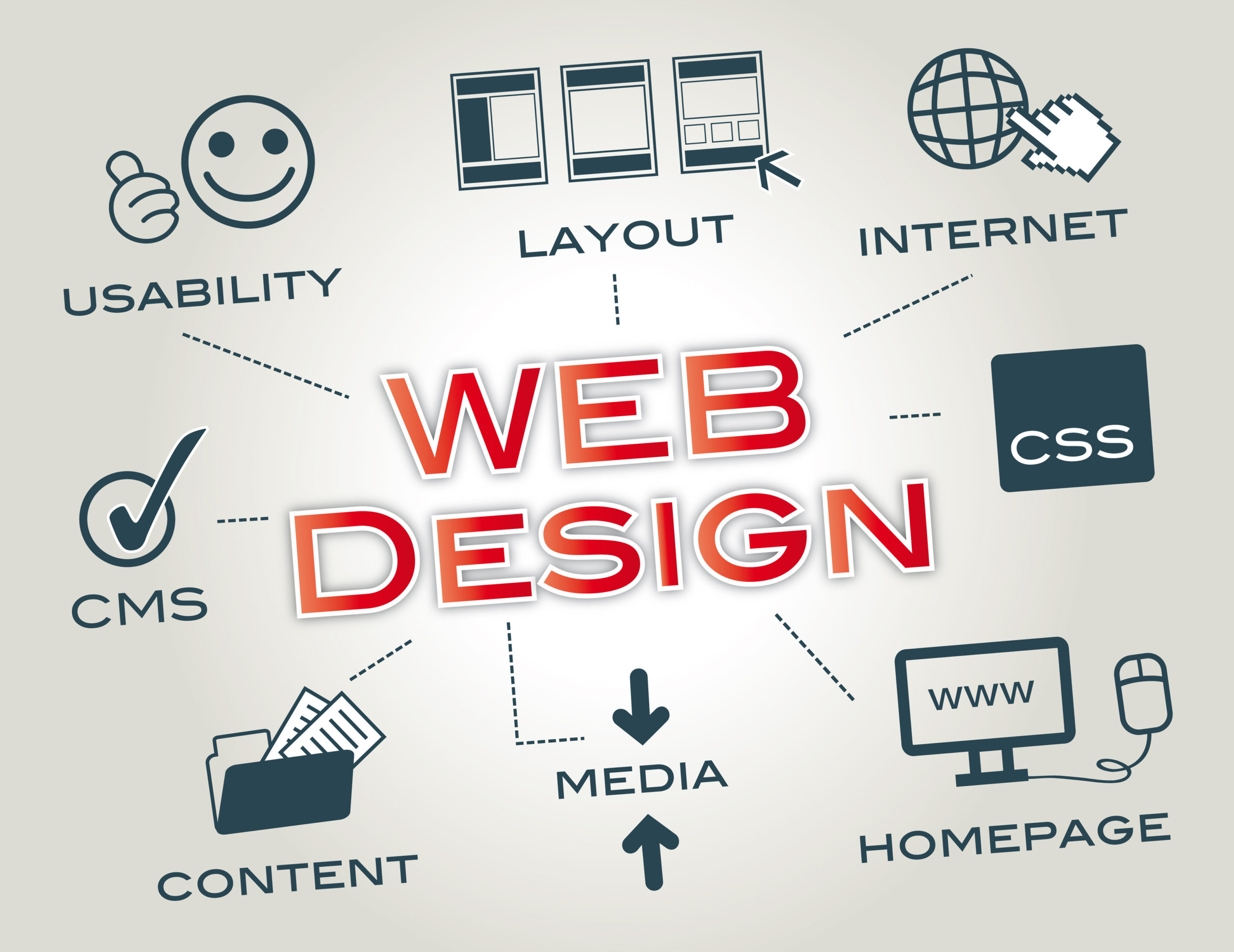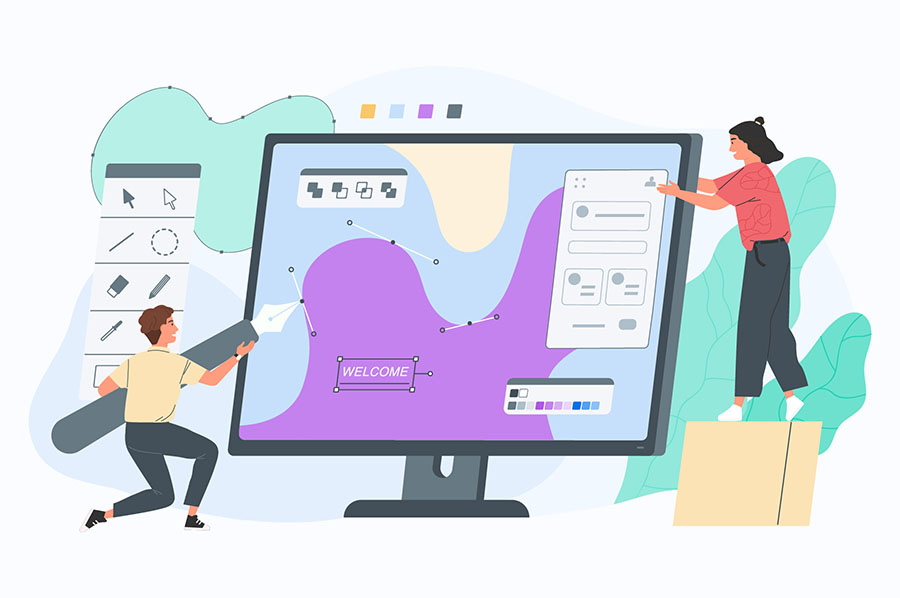The Thorough Overview of Present Fads and Advancements in Website Design That Forming the Future of Online Visibility
As the electronic landscape continues to develop, web design arises as a vital variable in forming customer interaction and general online visibility. Key trends such as receptive style, minimalism, and the combination of synthetic knowledge are redefining just how individuals communicate with websites.
The Surge of Responsive Layout

Responsive design employs fluid grids, versatile images, and CSS media questions, allowing content to readjust dynamically. Therefore, users can engage with websites easily, no matter whether they are making use of a mobile phone, desktop, or tablet computer . This adaptability has actually come to be particularly crucial as mobile net usage has exceeded desktop surfing, making it vital for organizations to deal with varied user needs.
Moreover, responsive design facilitates boosted seo (SEO) since search engines prefer mobile-friendly sites. By combining web growth initiatives into a solitary, responsive site, companies can improve maintenance and updates, minimizing operational prices. The surge of receptive design not just improves usability however also drives electronic advertising strategies, ensuring that brand names can get in touch with target markets successfully in a quickly advancing digital landscape.
Minimalism and User Experience
The appeal of minimalism in web design exists in its capacity to enhance individual experience by removing unnecessary elements and concentrating on vital material. This design approach stresses simpleness, allowing individuals to navigate internet sites effortlessly and quality. By lowering aesthetic clutter, minimalism helps with quicker decision-making, as individuals are routed to crucial information without disturbance.
Incorporating sufficient white space plays a critical function in minimalistic layout - web design Johannesburg. It not only enhances readability yet additionally produces a feeling of equilibrium and harmony, making content a lot more welcoming. The usage of a limited color scheme and straightforward typography better strengthens this approach, making certain that users can engage with the site without effort
Furthermore, minimalism usually causes quicker fill times, as fewer components require less bandwidth. This efficiency is essential in an era where attention spans are fleeting, and users anticipate immediate accessibility to details. Consequently, websites accepting minimalism often tend to promote higher interaction and lower bounce rates.
Artificial Intelligence Integration
Expert system (AI) integration is reinventing internet design by enhancing customization and individual interaction. By leveraging AI algorithms, developers can produce dynamic experiences that adjust to private user choices and habits. This ability to tailor content not only improves customer contentment yet also increases the chance of conversion.
AI-driven tools allow real-time data evaluation, enabling websites to readjust layouts, advise products, and existing customized web content based on individual interactions. For example, chatbots powered by natural language handling provide instantaneous support, attending to user inquiries and guiding them with the getting process flawlessly. This fosters a much more responsive and interactive atmosphere.
In addition, AI can simplify design procedures via automation. Tools that evaluate individual information can recommend design modifications, maximizing formats for optimum customer engagement. Predictive analytics additional help developers by forecasting trends and individual requirements, making certain that web experiences stay appealing and appropriate.
As AI technology remains to progress, its assimilation right into internet design will become progressively innovative, supplying much deeper understandings and boosting customer experiences. The harmony in between AI and internet design not just forms current trends but likewise paves the method for future innovations that focus on user-centric style.
Immersive and Interactive Aspects
A substantial change in the direction of interactive and immersive components in web style is transforming user experiences across the electronic landscape. Developers are progressively integrating functions such as 3D graphics, animations, and interactive narration to involve individuals on a much deeper level. These aspects not only captivate focus yet additionally motivate active participation, making the experience more remarkable.
Making use of increased and digital reality is acquiring traction, allowing individuals to engage with items in a simulated setting. Such innovations enhance the purchasing experience, giving individuals with a practical feeling of items before other buying. In addition, micro-interactions-- little animations that react to customer activities-- are becoming essential in leading individuals through their journey on an internet site.
In addition, gamification techniques are being integrated right into website design, transforming mundane tasks right into engaging tasks. you can try this out This technique not just increases customer engagement yet also cultivates brand commitment by making communications pleasurable.
As website design proceeds to progress, the concentrate on interactive and immersive components will likely heighten, establishing new requirements for customer engagement and contentment. Ultimately, these advancements are improving how individuals attach with digital content, leading the way for even more dynamic and engaging on-line experiences.

Accessibility and Inclusivity Standards
In today's electronic landscape, focusing on ease of access and inclusivity standards is essential for developing internet sites that accommodate varied audiences. These standards make certain that all people, regardless of capacity, can gain access to and navigate on-line material efficiently. Sticking to guidelines such as the Web Content Access Guidelines (WCAG) advertises an easy to use experience for people with handicaps, improving use for everybody.

Inclusivity standards extend beyond disability considerations; they incorporate social, etymological, and socio-economic diversity. This involves offering multilingual content and check my source accommodating various social contexts within style choices. By embracing accessibility and inclusivity, web developers not just conform with legal needs yet likewise foster an even more fair online atmosphere.
Ultimately, focusing on these requirements enhances user engagement and contentment, driving more comprehensive reach and effect for sites. As digital communications remain to evolve, access and inclusivity need to stay at the center of internet design approaches.
Verdict
The present trends and innovations in web style, such as responsive design, minimalism, expert system integration, immersive aspects, and accessibility standards, jointly shape a dynamic digital landscape. These advancements not just improve individual experience yet likewise ensure inclusivity for varied audiences. As modern technology remains to evolve, the combination of these fads will better redefine online visibility, fostering interaction and communication in manner ins which fulfill the ever-changing needs of individuals in a digital-first world.
As the electronic landscape continues to progress, internet design emerges as a critical aspect in forming user interaction and total online presence.The charm of minimalism in internet layout lies in its capability to boost user experience by stripping away unnecessary aspects and concentrating on important material. Devices that assess user data can suggest style changes, optimizing layouts for maximum customer engagement.A significant shift towards interactive and immersive components in internet design is transforming user experiences across the digital landscape. Additionally, micro-interactions-- little animations that respond to individual activities-- are becoming important in directing individuals with their journey on a site.